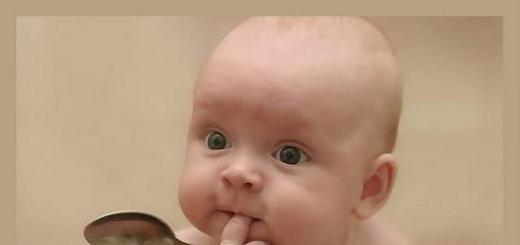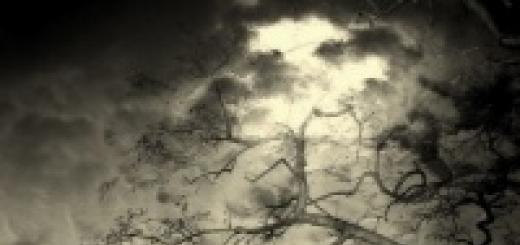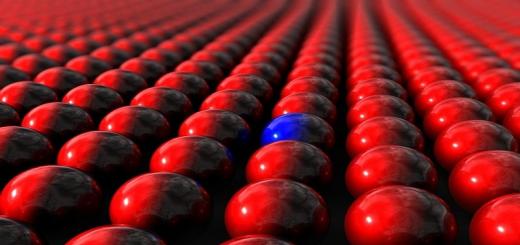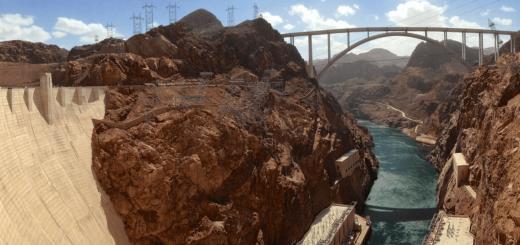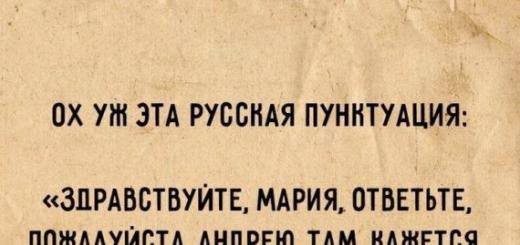Grade 9
1 option
A) a polymer
B) homopolymer
2. Which of the following substances NOT are polymers?
A) glucose B) cholesterol
B) glycogen D) hemoglobin
3. From the following substances, select polysaccharides:
A) glucose E) sucrose
B) starch G) chitin
C) ribose C) lactose
D) glycogen I) fructose
E) deoxyribose K) cellulose
4. The monomer of proteins is:
A) nucleotide
B) amino acid
B) glucose
D) glycerin
5. Starch monomer is:
A) nucleotide
B) amino acid
B) glucose
D) glycerin
6. Proteins that regulate the speed and direction of chemical reactions in the cell:
A) hormones
B) enzymes
B) vitamins
D) proteins
7. The sequence of monomers in a polymer is called:
A) primary structure
B) secondary structure
B) tertiary structure
D) quaternary structure
Substances: Functions:
1. energy
2. structural
A) lipids 3. supply of nutrients
4. protective
5. informational
6. catalytic
7. transport
Grade 9
Independent work on the topic:
"Molecular level of organization".
Option 2
1. Define the terms:
A) a polymer
B) heteropolymer
2. Which of the following substances are polymers?
A) glucose B) chitin
B) glycogen D) hemoglobin
3. From the following substances, select monosaccharides:
A) glucose E) sucrose
B) starch G) chitin
C) ribose C) lactose
D) glycogen I) fructose
E) deoxyribose K) cellulose
4. The composition of fats includes:
A) nucleotide
B) amino acid
B) glucose
D) glycerin
5. Substances that regulate the metabolism in the cell:
A) hormones
B) enzymes
B) vitamins
D) proteins
6. The sequence of monomers in a protein is called:
A) primary structure
B) secondary structure
B) tertiary structure
D) quaternary structure
7. Catalysts for chemical reactions are
B) carbohydrates
D) nucleic acids
8. Sign opposite the name of the organic substance the numbers corresponding to the functions performed by this substance in the cell.
Substances: Functions:
A) proteins 1. energy
2. structural
3. supply of nutrients
4. protective
5. informational
6. catalytic
"Molecular Level"
Grade 9
1 option
1. DNA monomer2. Where is the hereditary material located in viruses?A) in the cytoplasm; B) in the nucleus;B) in a special shell.
3. DNA does not contain nucleotides:
a) ribose b) thymine c) uracil
4. Primary protein structure
5. Functions of i-RNAA) stores genetic information; B) collects protein molecules;C) transfers genetic information from the nucleus to the site of protein synthesis;D) delivers amino acids to the ribosome.
6. Protein monomerA) an amino acid B) nucleotide;B) monosaccharides; D) glycerol and fatty acids.
7. The correspondence A-T, G-C, A-U is called:
a) transcription b) reduplicationii c) complementarity. DNA strands are held together by:
a) peptide bonds b) ionic bonds c) hydrogen bonds
9. Secondary protein structureA) a chain of amino acids; B) globule;B) a spiral D) several globules assembled into a single complex.
10. Functions of DNAA) stores genetic information; B) delivers amino acids to the ribosome;D) collects protein molecules; D) is involved in protein synthesis.
11. RNA is found in:
a) nucleus b) cytoplasm c) ribosomes
12. The process of losing the natural structure of the protein:
a) renaturation b) denaturation
c) homeostasis
13. Biological catalysts are:
a) antigens b) antibodies c) enzymes
14. Enzyme:
a) accelerates several types of reactions at once
b) works in narrow temperature limits
c) can only work at a certain pH value of the medium
15. Functions of carbohydrates in animal cells:
a) storage b) energy
c) transport
16. Fiber and chitin are examples:
a) polysaccharides b) monosaccharides c) disaccharides
17 .What is the name of an organic substance whose molecules contain C, O, H atoms, which perform an energy and building function?A-nucleic acid B-proteinB-carbohydrate G-ATP
18. What carbohydrates are polymers?A-monosaccharides B-disaccharides B-polysaccharides19. The group of monosaccharides includes:A-glucose B-sucrose B-cellulose 20. What is the role of ATP molecules in a cell?A-provide the transport function B-transmit hereditary information C-provide vital processes with energy D-accelerate biochemical reactions
21. Define the terms: DNA, RNA, complementarity, nucleotide, cellulose.22. Task: A section of a DNA molecule has the following structure:AATGCGATCTTAGTTTAGG, it is necessary to complete the complementary chain of i-RNA.
Biology test
"Molecular Level"
Grade 9
Option 2
1. Lipids differ from other substances:a) hydrophilic parts
b) hydrophobic parts
c) solubility in water
2. Protein monomers are:
a) amino acids b) monosaccharides c) nucleotides
3. Proteins are:
a) polynucleotides b) polypeptides
c) polysaccharides
4. Arrange the protein structures in sequence:
a) globule b) polymer chain
c) spiral
5. Hydrogen bonds are found in:
a) proteins b) nucleic acids
c) lipids
6. Not found in RNA:
a) ribose b) adenine c) glycerol
7. RNA most often consist of:
a) one chain b) two chains
c) individual nucleotides
8. Glycogen performs:
a) transport b) catalytic
c) storage function
c) tertiary and secondary; d) tertiary, secondary and primary.
10. Of these compounds, lipid nature has:a) hemoglobin; b) insulin; c) testosterone; d) penicillin.
11. DNA strands are held together by:
a) peptide bonds b) ionic bonds
c) hydrogen bonds
12. The monomer of fiber, starch, glycogen is1) fructose 2) amino acid 3) glucose 4) ribose13. How many of the known amino acids are involved in protein synthesis?A-20 B-100 V-23
14. What part of the amino acid molecules distinguishes them from each other?A-radical B-carboxyl group C-amino group
15. What compounds are included in ATP?A- adenine, carbohydrate ribose, 3 molecules of phosphoric acidB- guanine, fructose sugar, phosphoric acid residue.B-ribose, glycerol and any amino acid
16. A nucleotide is complementary to a guanyl nucleotide:A-thymidyl B-cytidylB-adenyl G-uridyl
17. Which scientist proposed the term "biology":A) C. Darwin;B) A. Levenguk; C) T. Ruz; D) L. K. Treviranus.
18. Glycogen and cellulose are examples of:
a) polysaccharides b) monosaccharides
c) disaccharides
19. monomers of nucleic acids are:A-amino acids B-fatsB-nucleotides G-glucose
20. What class of chemical substances does ribose belong to?A-protein B-carbohydrate C-lipid
21. A task.In what sequence will the nucleotides be located in the i-RNA if the DNA chain has the following composition: GGTATAGCGTTAAGCCTT.
22. Define the terms: polysaccharides, enzymes,renaturation, monomer, chitin.
Municipal educational institution
Sortavalsky municipal district of the Republic of Karelia
Secondary school No. 3
Diagnostic work in biology "Molecular level"
Grade 9
Sortavala 2010
Molecular level
1 option
1. All living organisms:
a) have adaptations to the environment
b) develop
c) are heterotrophs
d) capable of metabolism
2. The distinctive function of fats from carbohydrates:
a) building
b) energy
c) storage
d) protective
3. Monomers of nucleic acids are:
a) amino acids
b) glucose
c) nucleotides
d) nitrogenous bases
4. DNA is different from RNA:
a) location in the cell
b) belonging to biopolymers
c) the remainder of H 3 RO 4 , which is part of the nucleotide
d) the presence of thymine in the nucleotide
5. Enzyme:
a) biocatalyst
b) participates in the process of synthesis and decay of substances
c) most active t close to zero
d) has a protein base
6. Viruses are similar to non-living structures in that:
a) able to reproduce
b) unable to grow
c) have heredity and variability
d) do not produce energy
7. The composition of complex proteins - glycoproteins includes:
a) fats
b) nucleic acids
c) carbohydrates
d) inorganic substances
8. Vitamins:
a) are not used in the cage as a building material
b) are used as a reserve of nutrients
c) are biocatalysts
d) do not belong to biocatalysts
B. Determine the correct sequence.9. Draw the nucleotide sequence of the second DNA strand, indicating the hydrogen bonds:
T-T-G-A-C-C-T-G-A-A.
10. Establish a correspondence between the types of nucleic acids and their characteristics.
Nucleic acids Characteristic
A) RNA 1. biopolymer
B) DNA 2. deoxyribose as part of the monomer
3. H 3 RO 4 in the monomer
4. monomers contain ribose
5. consists of monomers
6. contains uracil
7. Nucleotides contain nitrogenous bases
8. a nucleotide has three components
9. Contains Thymine
10. located in the cytoplasm and ribosomes
11. located in the nucleus, mitochondria, plastids
12. contains adenine
Diagnostic work in biology
Molecular level
Option 2
A. Select all correct answers. 1. All living organisms: a) capable of metabolism b) have the same structure c) they are an open system d) develop2. Monomer versus polymer: a) has a more complex structure b) has a complex structure c) consists of repeating links d) is a link in the polymer chain3. The same functions of fats and proteins: a) protective b) construction c) storage d) energy4. Protein denaturation is irreversible in violation of the structure: a) primary b) secondary c) tertiary d) quaternary5. ATP is different from RNA nucleotides: a) the presence of ribose b) the absence of uracil c) the presence of three residues H 3 ro 4 d) the presence of adenine6. Viruses are similar to living organisms in that: a) unable to grow b) able to reproduce c) form a crystalline form of existence d) have heredity and variability7. Nitrogenous bases characteristic of DNA: a) guanine b) thymine c) uracil d) cytosine8. Carbohydrates include: a) ribose and lactose b) glycogen and starch c) glycerol and lipids d) cellulose and chitinB. Make a diagram. 9. Write down the missing DNA nucleotides, indicating the hydrogen bonds:A-G-*-C-C-T-*-*-G-CT-*-T-*-*-*-A-C-C-*
10. Establish a correspondence between the structure of a protein molecule and its characteristics.
Structure of a protein molecule
A) primary 1. characteristic of all proteinsB) secondary 2. globuleC) tertiary 3. polypeptide chainD) Quaternary 4. spiral5. occurs as a result of the connection several proteins6. formed by a strong peptide bond7. held by numerous hydrogen bondsconnections8. is destroyed by reversible denaturation
ANSWERS1 option1
Used materials
1. Biology. Introduction to general biology and ecology. Textbook for 9 cells. A.A. Kamensky, E.A. Kriksunov, V.V. Pasechnik M.: Bustard, 2007.
2. Frosin V.N., Sivoglazov V.I. Getting ready for the unified state exam: General biology. - M.: Bustard, 2004. - 216s;
3. Bolgova I.V. Collection of problems in General biology for entering universities. M .: "Onyx 21st century" "World and education", 2005;
4. Biology. Educational and training materials for the preparation of students. "Intellect-Center" 2007
1. What is the name of a large group of fat-like substances insoluble in water:
A) lipids;
B) proteins;
B) enzymes;
D) hormones.
2. Name the protein monomer:
A) glycerin;
B) amino acid;
B) glucose;
D) nucleotide.
3. How many hydrogen bonds are formed between adenine and thymine:
A) three;
B) two;
B) one;
D) four.
4. The rRNA monomer is:
A) glucose;
B) amino acid;
B) glycerin;
D) nucleotide.
5. What are the bonds between ATP phosphoric acid residues called:
A) macroergic;
B) energy;
B) phosphorus;
D) adenosine triphosphate.
6. Substances that change the rate of a chemical reaction, but are not part of the reaction products, are called:
A) polysaccharides;
B) polymers;
B) catalysts;
D) monomers.
7. Polysaccharides do not include:
A) glycogen;
B) fructose;
B) cellulose;
D) starch.
8. What is the name of the non-protein compound that is part of enzymes:
A) capsid
B) catalyst;
B) coenzyme;
D) protein.
9. The composition of fats includes:
A) a nucleotide
B) amino acid;
B) glucose;
D) glycerin.
10. The composition of RNA does not include:
A) adenine
B) thymine;
B) cytosine;
D) uracil.
11. In the cell, lipids perform the following function:
A) energy;
B) informational;
B) catalytic
D) motor.
12. A coiled polypeptide chain is a protein structure:
A) primary;
B) secondary;
B) tertiary.
D) quaternary.
13. Establish a correspondence between the classes of organic substances and their functions:
Squirrels
Nucleic acids
Carbohydrates
lipids
Functions:
A) regulatory;
B) storage and transmission of hereditary information;
B) energy;
D) construction;
D) storage;
E) catalytic;
G) protective;
H) signal;
I) motor.
14. Establish a correspondence between the classes of organic substances and their representatives:
carbohydrates;
lipids;
proteins.
Representatives:
A) wax
B) hemoglobin;
B) starch
D) antibodies;
D) fats;
E) fructose.
15. Establish a correspondence between the types of nucleic acids and their features:
DNA;
RNA.
A) the molecule is a double helix;
B) consists of one chain of monomers;
C) the composition of nucleotides includes nitrogenous bases A, C, G, U.
D) the composition of nucleotides includes nitrogenous bases A, C, G, T.
D) the principle of complementarity is present in the structure;
E) different types are distinguished, depending on the function performed.
G) the composition includes ribose;
C) contains deoxyribose.
16. From the listed carbohydrates, select monosaccharides:
Ribose;
Glycogen;
Cellulose;
Fructose;
Starch;
Glucose.
17. Which of the following substances are not polymers:
Glucose;
DNA;
Hemoglobin;
Fructose;
tRNA;
Ribose.
18. Set the sequence of complication of the structure of the protein molecule:
A) several connected protein globules;
B) the sequence of amino acids in the composition of the polypeptide chain;
C) a polypeptide chain twisted into a spiral;
D) three-dimensional spatial "packing" of the polypeptide chain.
19. Find errors in the given text, indicate the numbers of the sentences in which they are made, correct the errors:
Viruses have a cellular structure.
The protein coat of viruses is called the capsid.
Viruses are made up of carbohydrates and lipids.
Tuberculosis is a viral disease.
Viruses can cause diseases not only in animals but also in plants.
20. A fragment of one strand of DNA is given: A-G-T-T-T-C-G-A-A-C-G-. Build a complementary second chain.
21. Find errors in the DNA molecule:
A-G-A-T-T-C-C-A-T-G-
T-G-T-A-T-G-G-T-A-T-
22. Find errors in the RNA molecule: A-A-T-G-C-U-T-A-T-C.
Answers:
1a; 2b; 3b; 4g; 5a; 6c; 7b; 8c; 9g; 10b; 11a; 12th century
1- a, c, d, f, g, h, i
2 - b
3 - c, d, e
4 - c, d, e, g
14. 1-B, E
2-A,D
3-B,G
1 - A, G, D, Z
2 - B, C, F, F.
16. 1,4,6
17. 1,4,6
18. B.V.G.A.
1 - viruses do not have a cellular structure;
4 - viruses consist of a nucleic acid and a protein coat;
5 - tuberculosis - a bacterial disease.
20. A-G-T-T-T-C-G-A-A-C-G
T-C-A-A-A-G-C-T-T-G-C
21. Find errors in the DNA molecule:
A-G-A-T-T-C-C-A-T-G-
T-G-T-A-T-G-G-T-A-T-violated the principle of complementarity: A-T; C-G.
22. Find errors in the RNA molecule: A-A-T-G-C-U-T-A-T-C. - in the RNA molecule there is no nitrogenous base of thymine, it is replaced by uracil.
Option 1
Part A 1. The monomer of a protein molecule is 1) nitrogenous base 2) monosaccharide 3) amino acid 4) lipid
2. Most enzymes are 1) carbohydrates 2) lipids 3) amino acids 4) proteins
3. The building function of carbohydrates is that they
1) form a cellulose cell wall in plants 2) are biopolymers
3) are able to dissolve in water 4) serve as a reserve substance of an animal cell
4. Lipids play an important role in cell life, since they
1) are enzymes 2) dissolve in water 3) serve as a source of energy 4) maintain a constant environment in the cell.
5. Proteins, unlike carbohydrates, have the ability to
1) solubility 2) denaturation 3) conduction of a nerve impulse 4) accumulation of a large amount of energy
6. What pairs of nucleotides form hydrogen bonds in the DNA molecule (complementary)?
1) adenine and thymine 2) adenine and cytosine 3) guanine and thymine 4) uracil and thymine
Part B 1 . The RNA molecule contains:
A) ribose B) guanium C) magnesium cation D) deoxyribose E) amino acid E) phosphoric acid
2. Establish a correspondence between the function of the compound and the biopolymer for which it is characteristic. In the table below, under each number that defines the position of the first column, write down the letter corresponding to the position of the second column
FUNCTION BIOPOLYMER
1) storage of hereditary information A) protein B) DNA
2) the formation of new molecules by self-doubling
3) acceleration of chemical reactions
4) is an essential component of the cell membrane
5) neutralization of antigens
12
3
4
5
Part FROM
Why does glucose not play a storage role in the cell?
Test on the topic "Molecular level of organization". Option 2
Part A 1. The bonds between monomers in a protein molecule are called
1) hydrogen 2) ionic 3) peptide 4) energy intensive
2. The protective function of proteins is manifested in the fact that they
1) undergo denaturation 2) serve as antibodies 3) participate in cell construction 4) transport gases
3. What reserve nutrient serves as an energy reserve of the cell?
1) starch 2) amino acid 3) nucleic acid 4) polysaccharide - chitin
4. Fats in the cell provide
1) transport of hydrophilic (water-soluble) substances 2) dissolution of hydrophobic (water-insoluble) substances 3) acceleration of chemical reactions 4) motor function
5. The main function of carbohydrates compared to proteins is
1) building 2) protective 3) catalytic 4) energy
6. What carbohydrate is included in the composition of RNA nucleotides? 1) ribose 2) glucose 3) sucrose 4) deoxyribose
Part B
1. The DNA molecule contains
A) phosphoric acid B) adenine C) ribose D) deoxyribose E) uracil E) iron cation
Write your answer as a sequence of letters in alphabetical order (no spaces or other characters).
2. Establish a correspondence between the function of the compound and the biopolymer for which it is characteristic. In the table below, under each number that defines the position of the first column, write down the letter corresponding to the position of the second column.
FUNCTION BIOPOLYMER
1) formation of cell walls A) polysaccharide B) nucleic acid
2) transportation of amino acids
3) storage of hereditary information
4) serves as a reserve nutrient
5) provides the cell with energy
Write down the resulting sequence of letters in the table and transfer it to the answer sheet (without spaces or other symbols).
12
3
4
5
Part C.1. Why is starch classified as a biopolymer and what property of starch determines its storage function in the cell?
